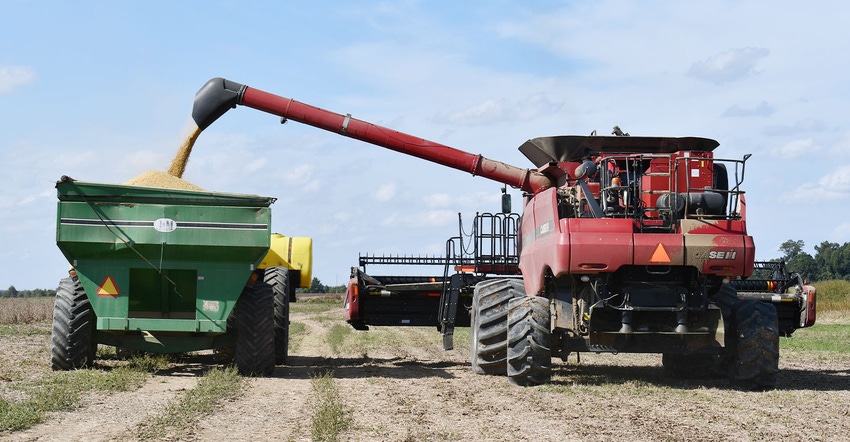
By March 15, farmers have the option to enroll their base acres in either the Agriculture Risk Coverage program (ARC) or the Price Loss Coverage program (PLC).
"The decision is mainly between Agriculture Risk Coverage-County or Price Loss Coverage," said Will Maples, Assistant Extension Professor for the Department of Agricultural Economics at Mississippi State University. "There is also an ARC individual program, which is a lesser-used program."
Differences between PLC and ARC
Price Loss Coverage is a Farm Bill program where payments are determined by a set reference price and the marketing year average price for commodities.
"PLC pays off if the marketing year average price falls below a set reference price," Maples said. "The reference price for corn, for example, is $3.70 while soybean is $8.40. If the marketing year average price was to fall below those, then you would get a payment to make up the difference."
Agriculture Risk Coverage-County is a revenue-based program, which makes a payment if the county average per acre revenue falls below a set benchmark revenue for your county.
"FSA sets a benchmark revenue for every county, which is calculated based on a five-year history of your county's yields and the national average price," he said. “For 2021, FSA will determine the benchmark revenue by taking an Olympic average of county yields and national average prices for 2015-2019.”
If the county average revenue is below benchmark, then ARC will pay out a payment.
"When looking between the two programs, you have two different things in play," Maples said. "PLC is all price risk-based, but with ARC, you're looking at yield and price risk since it is revenue-based. ARC can pay out if prices drop or if your county faces yield loss."
Deciding which program
For 2021, enrollment for the programs is a little different.
"Last enrollment period, it was for the 2019 and the 2020 marketing years, so it was a two-year commitment," Maples said. "Now, under the 2018 Farm Bill, it is a yearly decision on whether you want to stay in the same program or switch.
"As of now, the decision looks different than it did last year. Because of the way the marketing years fall, we had a good idea of which program was going to pay out for 2019-2020."
Between the Trade Wars and low prices, PLC was the program many leaned toward in 2019-2020.
"For 2021, though, the sign-up date is March 15," he said. "However, the marketing year for corn and soybean won't start until September of 2021, and cotton doesn't start until August of 2021. You're having to decide before you have any information on what prices could be doing, so everything is based on projections, making the decision a little bit harder.
"So far, my current projections, and others I have seen, has the 2021 marketing year average corn price sitting at around $4 per bushel, which is above the reference price for PLC. For soybeans, 2021 marketing year average price projections are around the $10 a bushel range, which is above the $8.40 reference price as well. Looking forward to 2021, PLC does not look as attractive as it did in the past."
For rice and peanuts, PLC is usually more appealing due to the reference prices.
"It depends on the commodity, but also, you're enrolling your base acres for the commodity, so it's not completely tied to what you're planting for 2021," Maples said. "Instead, it's tied to your base acres because these programs are trying to decouple it from what you may want to plant."
One component of the PLC program is that it offers the ability to purchase Supplemental Coverage Option (SCO), which is a crop insurance option that provides additional coverage for a portion of an underlying crop. Crops on a farm that are enrolled in the Agricultural Risk Coverage Program are not eligible for SCO coverage.
"One other thing to consider when looking at these two choices is, while PLC may not look as good for corn and soybeans, you have an option if you enroll in PLC to purchase Supplemental Coverage Option insurance," Maples said.
"You can only purchase SCO if the crop is enrolled in PLC, and it follows the underlying insurance policy. If you are someone in a situation where neither program looks beneficial for your farm, you might consider the PLC program to have access to Supplemental Coverage Option."
For more information, click the link: https://www.fsa.usda.gov/programs-and-services/arcplc_program/index.
About the Author(s)
You May Also Like




